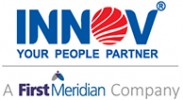
i
Progressive
Infovision
Filter interviews by
Progressive Infovision Network Engineer Interview Questions and Answers
7 Interview questions
VTP (VLAN Trunking Protocol) manages VLAN configurations across switches in a network.
VTP operates in three modes: Server, Client, and Transparent.
In Server mode, switches can create, modify, and delete VLANs.
Client mode switches receive VLAN information but cannot make changes.
Transparent mode switches forward VTP advertisements but do not participate in VTP.
Example: A VTP server creates a VLAN; all clients recei...
Routers connect multiple networks together, while switches connect devices within a single network.
Routers operate at the network layer (Layer 3) of the OSI model, while switches operate at the data link layer (Layer 2).
Routers use IP addresses to forward data between networks, while switches use MAC addresses to forward data within a network.
Routers determine the best path for data packets to reach their destinat...
The OSI model is a conceptual framework that standardizes the functions of a telecommunication or computing system into seven different layers.
The OSI model stands for Open Systems Interconnection model.
It helps in understanding how different networking protocols work together.
Each layer has a specific function and communicates with the layers above and below it.
Examples of layers include physical layer, data link...
STP stands for Spanning Tree Protocol, a network protocol used to prevent loops in Ethernet networks.
STP is used to create a loop-free logical topology in a network.
It works by selecting a root bridge and calculating the shortest path to reach each network segment.
STP uses a tree-like structure to block redundant paths and ensure data flows efficiently.
It helps in preventing broadcast storms and improving network ...
Public IP is the address assigned to a device connected to a network, accessible over the internet. Private IP is used within a private network.
Public IP is unique and globally routable
Private IP is used within a local network and not accessible over the internet
Public IP allows devices to communicate with other devices on the internet
Private IP allows devices to communicate within the local network
Example of publ...
The statement is incorrect. Routers route between different networks, while switches connect devices within the same network.
Routers route traffic between different networks based on IP addresses
Switches connect devices within the same network based on MAC addresses
Example: A router connects a home network to the internet, while a switch connects devices within the home network
The OSI model consists of 7 layers that define the functions of a network.
The 7 layers of the OSI model are: Physical, Data Link, Network, Transport, Session, Presentation, and Application.
Each layer has specific functions and protocols associated with it.
For example, the Physical layer deals with the physical connection between devices, while the Application layer handles user interfaces.
Progressive Infovision Network Engineer Interview Experiences
4 interviews found
I appeared for an interview in Mar 2025, where I was asked the following questions.
- Q1. What is STP?
- Ans.
Spanning Tree Protocol (STP) prevents loops in network topologies by creating a loop-free logical topology.
STP is defined in IEEE 802.1D standard.
It uses a tree structure to identify and disable redundant paths.
Root Bridge: The central switch in the STP topology.
Bridge Protocol Data Units (BPDUs) are used for communication between switches.
Example: In a network with multiple switches, STP will block certain ports to pr...
- Q2. How does VTP work?
- Ans.
VTP (VLAN Trunking Protocol) manages VLAN configurations across switches in a network.
VTP operates in three modes: Server, Client, and Transparent.
In Server mode, switches can create, modify, and delete VLANs.
Client mode switches receive VLAN information but cannot make changes.
Transparent mode switches forward VTP advertisements but do not participate in VTP.
Example: A VTP server creates a VLAN; all clients receive th...
I applied via Naukri.com and was interviewed in Jul 2023. There were 2 interview rounds.

(3 Questions)
- Q1. Questions about Subnetting
- Q2. BGP and OSPF routing questions
- Q3. Questions about HSRP, and VSS Stacking
Interview Preparation Tips
I applied via Naukri.com and was interviewed before Mar 2023. There was 1 interview round.
(4 Questions)
- Q1. What is Osi model
- Ans.
The OSI model is a conceptual framework that standardizes the functions of a telecommunication or computing system into seven different layers.
The OSI model stands for Open Systems Interconnection model.
It helps in understanding how different networking protocols work together.
Each layer has a specific function and communicates with the layers above and below it.
Examples of layers include physical layer, data link laye...
- Q2. There is 7 layer
- Ans.
The OSI model consists of 7 layers that define the functions of a network.
The 7 layers of the OSI model are: Physical, Data Link, Network, Transport, Session, Presentation, and Application.
Each layer has specific functions and protocols associated with it.
For example, the Physical layer deals with the physical connection between devices, while the Application layer handles user interfaces.
- Q3. Difference between router and switch
- Ans.
Routers connect multiple networks together, while switches connect devices within a single network.
Routers operate at the network layer (Layer 3) of the OSI model, while switches operate at the data link layer (Layer 2).
Routers use IP addresses to forward data between networks, while switches use MAC addresses to forward data within a network.
Routers determine the best path for data packets to reach their destination, ...
- Q4. Router routes between the network and switch switches within the network
- Ans.
The statement is incorrect. Routers route between different networks, while switches connect devices within the same network.
Routers route traffic between different networks based on IP addresses
Switches connect devices within the same network based on MAC addresses
Example: A router connects a home network to the internet, while a switch connects devices within the home network
Interview Preparation Tips
Skills evaluated in this interview
I applied via Naukri.com and was interviewed before Apr 2022. There were 2 interview rounds.

(2 Questions)
- Q1. What is public and private ip?
- Ans.
Public IP is the address assigned to a device connected to a network, accessible over the internet. Private IP is used within a private network.
Public IP is unique and globally routable
Private IP is used within a local network and not accessible over the internet
Public IP allows devices to communicate with other devices on the internet
Private IP allows devices to communicate within the local network
Example of public IP...
- Q2. What is stp in ?
- Ans.
STP stands for Spanning Tree Protocol, a network protocol used to prevent loops in Ethernet networks.
STP is used to create a loop-free logical topology in a network.
It works by selecting a root bridge and calculating the shortest path to reach each network segment.
STP uses a tree-like structure to block redundant paths and ensure data flows efficiently.
It helps in preventing broadcast storms and improving network stabi...
Skills evaluated in this interview
Top trending discussions






Interview questions from similar companies

I applied via Referral and was interviewed in May 2023. There were 2 interview rounds.

(2 Questions)
- Q1. What is the MGCP, SIP and SCCP
- Ans.
MGCP, SIP, and SCCP are protocols used in telecommunications for controlling communication sessions.
MGCP (Media Gateway Control Protocol) is used for controlling media gateways in VoIP networks.
SIP (Session Initiation Protocol) is used for initiating, maintaining, and terminating real-time sessions like voice and video calls over IP networks.
SCCP (Skinny Client Control Protocol) is a Cisco proprietary protocol used for...
- Q2. How to logs collect
- Ans.
Logs can be collected using various methods such as syslog, SNMP, agent-based monitoring, and log management tools.
Use syslog to collect system logs from network devices
Utilize SNMP to gather performance data and alerts from network devices
Deploy agent-based monitoring tools on servers to collect detailed logs
Implement log management tools like Splunk or ELK stack for centralized log collection and analysis
Skills evaluated in this interview


(1 Question)
- Q1. Basic questions only
(1 Question)
- Q1. Related CCNA and ccnp

(2 Questions)
- Q1. What is Vlan explain
- Ans.
VLAN stands for Virtual Local Area Network, a method of segmenting a physical network into multiple virtual networks.
VLANs allow for better network security by isolating traffic between different groups of devices.
They can improve network performance by reducing broadcast traffic.
VLANs can be used to logically group devices based on department, function, or location.
Each VLAN operates as if it is on its own separate ne...
- Q2. Difference in P2P and MPLS
- Ans.
P2P is a direct connection between two parties, while MPLS is a network technology that directs data from one network node to the next based on short path labels.
P2P stands for Peer-to-Peer and is a decentralized communication model where each party has equal capabilities and responsibilities.
MPLS stands for Multiprotocol Label Switching and is a routing technique used in telecommunications networks to speed up and sha...
Skills evaluated in this interview

I applied via Walk-in and was interviewed in Dec 2020. There was 1 interview round.
Interview Questionnaire
1 Question
- Q1. About ftth and installation ???
Interview Preparation Tips

- Q1. What is expected salary
- Q2. What is your expected salary
- Q3. Expected salary

- Q1. Network basic testing
- Q2. Core networking question
Progressive Infovision Interview FAQs
Tell us how to improve this page.
Progressive Infovision Interviews By Designations
- Progressive Infovision Desktop Support Engineer Interview Questions
- Progressive Infovision Network Engineer Interview Questions
- Progressive Infovision Service Desk Engineer Interview Questions
- Progressive Infovision Technical Support Engineer Interview Questions
- Progressive Infovision Project Engineer Interview Questions
- Progressive Infovision Informatica Developer Interview Questions
- Progressive Infovision Desktop Support Engineer L2 Interview Questions
- Progressive Infovision IOS Application Developer Interview Questions
- Show more
Interview Questions for Popular Designations
- Software Engineer Interview Questions
- Senior Engineer Interview Questions
- System Engineer Interview Questions
- Engineer Interview Questions
- NOC Engineer Interview Questions
- Senior Network Engineer Interview Questions
- Network Support Engineer Interview Questions
- Network Security Engineer Interview Questions
- Show more
Overall Interview Experience Rating
based on 5 interview experiences
Difficulty level
Duration
Interview Questions from Similar Companies
Progressive Infovision Network Engineer Reviews and Ratings
based on 19 reviews
Rating in categories
|
Desktop Support Engineer
174
salaries
| ₹1.4 L/yr - ₹3.6 L/yr |
|
Desktop Support Engineer L2
64
salaries
| ₹1.6 L/yr - ₹4 L/yr |
|
Technical Support Engineer
26
salaries
| ₹1.9 L/yr - ₹4 L/yr |
|
Desktop Support Engineer L1 and L2
24
salaries
| ₹1.7 L/yr - ₹3.7 L/yr |
|
Desktop Support Engineer 2
22
salaries
| ₹2.3 L/yr - ₹3.2 L/yr |

Randstad

Team Lease

Innovsource Services

IMPACT Infotech
- Home >
- Interviews >
- Progressive Infovision Interview Questions















